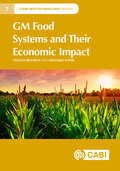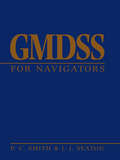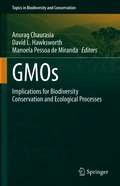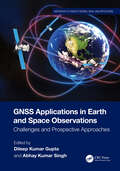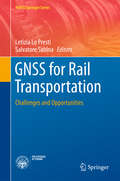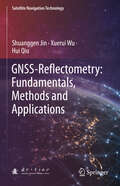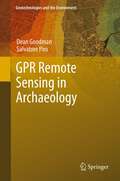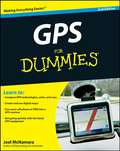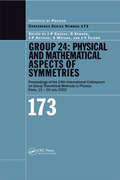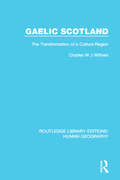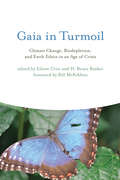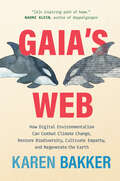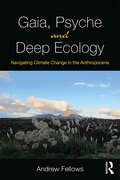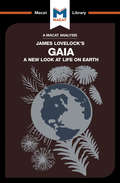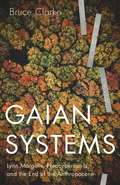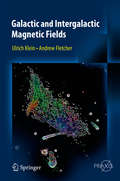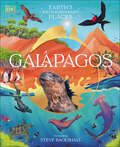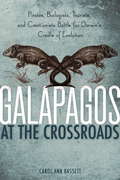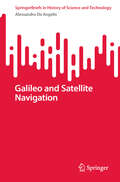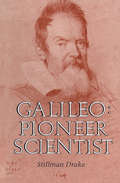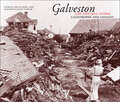- Table View
- List View
GM Food Systems and Their Economic Impact (CABI Biotechnology Series)
by Dr Tatjana Brankov Dr Koviljko LovreThe development of transgenic crops is revolutionary, but what does it mean for food production, prices and the environment? This is the first book to examine the economic evidence in a methodical way. It initially describes the historical evolution of biotechnology and defines key terms, before moving on to explore transgenic technology and food regime concepts. The book analyzes genetically modified organism (GMO) policy as part of overall agrarian policy, considering neoregulation in the USA, the EU, Brazil, Russia, China, India, South Africa and Serbia; as well as discussing agricultural performance, support and trade relations. The effect of transgenic food production on world food prices is also examined, along with food security at global and regional levels, and the links between GMOs and world hunger. The environmental implications of transgenic technology are considered through analysis of pesticide and fertilizer usage and efficiency, and pesticide consumption in GMO and non-GMO producing countries. Finally, the book considers the entry of transgenic ingredients into the food chain and lists the products affected. Key features: - Detailed analysis of economic data. - Comparison of international trends, including BRICS countries (Brazil, Russia, India, China and South Africa) and Serbia. - Evaluation of environmental and food security implications. - Glossary of important terms. This book will be valuable for agricultural economists, including students at Masters and PhD level. It will also be of interest to agricultural engineers, food technologists, nutritionists, industry representatives, policy makers, policy advisers and analysts and NGOs.
GMDSS for Navigators
by Peter Smith John SeatonThe Global Maritime distress and Safety System (GMDSS) is becoming the all-embracing term for communication and data transfer between ship and shore, and ship and ship. It's a highly automated system of terrestrial satellite communications technology whose primary role is to maintain safety of life at sea. Within the next five years all vessels over 300 tonnes will be required to carry GMDSS equipment. The seafaring nations of the world have together established the rules and regulations for good working practices within the system, and every serving and future navigating officer will be required to hold the GMDSS General Operator's Certificate. GMDSS for Navigators brings together in one publication the knowledge required by anyone who wants to become a qualified and competent operator of GMDSS communications equipment. It should prove to be the accepted universal reference for GMDSS training.
GMOs: Implications for Biodiversity Conservation and Ecological Processes (Topics in Biodiversity and Conservation #19)
by David L. Hawksworth Anurag Chaurasia Manoela Pessoa de MirandaThis book covers a broad spectrum of topics related to GMOs and allied new gene-based technologies, biodiversity, and ecosystem processes, bringing together the contributions of researchers and regulators from around the world. The aim is to offer a clear view of the benefits and effects of genetically modified crops, insects, and other animals on the soil microbiome and ecological processes. Contributors examine issues related to the development of risk assessment procedures and regulations designed to maximize benefits while minimizing risks. Beyond the scientific challenges of GMOs, the book explores the broad and contentious terrain of ethical considerations. The contributors discuss such questions as the unintended, possibly unforeseen, consequences of releasing GMOs into ecosystems, and the likelihood that the full effects of GMOs could take years, even decades, of close monitoring to become evident. The importance of developing a precautionary approach is stressed. The final chapter describes the critical issues of governance and regulation of new and emerging gene-based technologies, as nations grapple with the consequences of adopting the Cartagena Protocol on Biosafety (CPB). The volume includes an extensive Annex which outlines legal perspectives on the state of GMO governance around the world, with more than 20 examples from nations in Africa, South and Central America, Asia, Australasia, and Europe.
GNSS Applications in Earth and Space Observations: Challenges and Prospective Approaches (Microsatellite Remote Sensing, GNSS, and Applications)
by Abhay Kumar Singh Dileep Kumar GuptaGlobal Navigation Satellite Systems (GNSSs) have become an essential technology used in navigation, positioning, and timing applications in meteorology, environmental monitoring, disaster management, and space exploration. This comprehensive book explores the various applications of GNSS technology in different fields of Earth and Space observations and provides researchers, professionals, and students valuable insights into these emerging trends. It discusses the challenges that impact the performance of GNSS technology and offers solutions through several case studies on Space weather and climate disasters, opening a different dimension of approaches in various paradigms of GNSS technology.Features: Covers the most up-to-date GNSS applications in three major areas related to Earth and Space observations: climate studies, disaster management, and Space weather monitoring Includes case studies of best practices in climate studies and disaster management Explains the impacts of Space weather events on the near-Earth environment Describes limitations and future possibilities of better use of GNSS in Earth and Space observation and monitoring Highlights an integrated and interdisciplinary approach valuable to a wide range of readers studying Earth and Space interactions This book is a valuable resource for professionals, researchers, academics, and students in Remote Sensing and GIS, Earth Science, Physics and Electronics, Climate Studies, Disaster Management, Geophysics, and Space Science.
GNSS for Rail Transportation: Challenges And Opportunities (PoliTO Springer Series)
by Letizia Lo Presti Salvatore SabinaThis book proposes a general methodology to introduce Global Navigation Satellite System (GNSS) integrity, starting from a rigorous mathematical description of the problem. It highlights the major issues that designers need to resolve during the development of GNSS-based systems requiring a certain level of confidence on the position estimates. Although it follows a general approach, the final chapters focus on the application of GNSS integrity to rail transportation, as an example. By describing the main requirements in the context of train position function, one of which is the safe function of any train control system, it shows the critical issues associated with the concept of safe position integrity. In particular, one case study clarifies the key differences between the avionic domain and the railway domain related to the application of GNSS technologies, and identifies a number of railway-signaling hazards linked with the use of such technology. Furthermore, it describes various railway-signaling techniques to mitigate such hazards to prepare readers for the future evolution of train control systems, also based on the GNSS technology. This unique book offers a valuable reference guide for engineers and researchers in the fields of satellite navigation and rail transportation.
GNSS-Reflectometry: Fundamentals, Methods and Applications (Satellite Navigation Technology)
by Shuanggen Jin Xuerui Wu Hui QiuThis book gives comprehensive introduction to the fundamentals, methods and applications of GNSS-Reflectometry (GNSS-R), including GNSS-R history, GNSS reflection signal characteristics, ground-based GNSS multipath reflectometry, interference pattern technology, delay Doppler map, space-based GNSS-R theory, ocean altimetry, hydrological remote sensing, vegetation monitoring and cryosphere remote sensing, etc. It well presents the current status and the latest application progress in this field. The authors have been engaged in the research and application of GNSS-R for many years with achieving lots of original theoretical and application progress, such as GNSS-R scattering mechanism and new applications, which reflect the forefront trends and cutting-edge dynamics in this discipline. It has important reference value and application prospect for marine monitoring, environment remote sensing, global change monitoring, glacier and permafrost monitoring, meteorological and agricultural application and so on. This book is suitable for professionals, graduate students, and researchers engaged in satellite navigation, remote sensing, space geodesy, marine environment, meteorological services, and global change, and as well as technical support for engineers and transformation applications, especially those engaged in satellite navigation development and environmental remote sensing applications. The basis of English translation of this book, originally in Chinese, was facilitated by artificial intelligence. The content was later revised completely by the authors for accuracy.
GPR Remote Sensing in Archaeology
by Dean Goodman Salvatore PiroGPR Remote Sensing in Archaeology provides a complete description of the processes needed to take raw GPR data all the way to the construction of subsurface images. The book provides an introduction to the "theory" of GPR by using a simulator that shows how radar profiles across simple model structures look and provides many examples so that the complexity of radar signatures can be understood. It continues with a review of the necessary radargram signal processes needed along with examples. The most comprehensive methodology to construct subsurface images from either coarsely spaced data using interpolation or from dense data from multi-channel equipment and 3D volume generation is presented, advanced imaging solutions such as overlay analysis are introduced, and numerous worldwide site case histories are shown. The authors present their studies in a way that most technical and non-technical users of the equipment will find essentials for implementing in their own subsurface investigations.
GPS For Dummies
by Joel McnamaraNeed directions? Are you good at getting lost? Then GPS is just the technology you've dreamed of, and GPS For Dummies is what you need to help you make the most of it.If you have a GPS unit or plan to buy one, GPS For Dummies, 2nd Edition helps you compare GPS technologies, units, and uses. You'll find out how to create and use digital maps and learn about waypoints, tracks, coordinate systems, and other key point to using GPS technology.Get more from your GPS device by learning to use Web-hosted mapping services and even how to turn your cell phone or PDA into a GPS receiver. You'll also discover:Up-to-date information on the capabilities of popular handheld and automotive Global Positioning SystemsHow to read a map and how to get more from the free maps available onlineThe capabilities and limitations of GPS technology, and how satellites and radio systems make GPS workHow to interface your GPS receiver with your computer and what digital mapping software can offerWhy a cell phone with GPS capability isn't the same as a GPS unitWhat can affect your GPS reading and how accurate it will beHow to use Street Atlas USA, TopoFusion, Google Earth, and other toolsFun things to do with GPS, such as exploring topographical maps, aerial imagery, and the sport of geocachingMost GPS receivers do much more than their owners realize. With GPS For Dummies, 2nd Edition in hand, you'll venture forth with confidence!
GPU Solutions to Multi-scale Problems in Science and Engineering
by David A. Yuen Wei Ge Lennart Johnsson Long Wang Xuebin Chi Yaolin ShiThis book covers the new topic of GPU computing with many applications involved, taken from diverse fields such as networking, seismology, fluid mechanics, nano-materials, data-mining , earthquakes ,mantle convection, visualization. It will show the public why GPU computing is important and easy to use. It will offer a reason why GPU computing is useful and how to implement codes in an everyday situation.
GROUP 24: Physical and Mathematical Aspects of Symmetries: Proceedings of the 24th International Colloquium on Group Theoretical Methods in Physics, Paris, 15-20 July 2002
by J-P Antoine J-P Gazeau R Kerner S Métens J-Y ThibonAs a record of an international meeting devoted to the physical and mathematical aspects of group theory, GROUP 24: Physical and Mathematical Aspects of Symmetries provides an important selection of informative articles describing recent advances in the field. The applications of group theory presented in this book deal not only with the traditional fields of physics, but also include such disciplines as chemistry and biology. Plenary session contributions are represented by 18 longer articles, followed by nearly 200 shorter articles. The book also presents coherent states, wavelets, and applications and quantum group theory and integrable systems in two separate sections.
Gaelic Scotland: The Transformation of a Culture Region (Routledge Library Editions: Human Geography #19)
by Charles W WithersThis book, originally published in 1988, examines the Highlands and Islands of Scotland over several centuries and charts their cultural transformation from a separate region into one where the processes of anglicisation have largely succeeded. It analyses the many aspects of change including the policies of successive governments, the decline of the Gaelic language, the depressing of much of the population into peasantry and the clearances.
Gaia Alchemy: The Reuniting of Science, Psyche, and Soul
by Stephan Harding• Examines how integrating important alchemical images with Gaian science can offer insights into our interconnectedness with Gaia • Looks at how the four components of the living earth--biosphere, atmosphere, hydrosphere, and lithosphere--mesh with the four elements of alchemical theory and the four functions of consciousness as understood by depth psychology • Offers guided meditations and contemplative exercises to open your receptivity to messages from the biosphere and help you connect more deeply with Gaia During the scientific revolution, science and soul were drastically separated, propelling humanity into four centuries of scientific exploration based solely on empiricism and rationality. But, as scientist and ecologist Stephan Harding, Ph.D., demonstrates in detail, by reintegrating science with profound personal experiences of psyche and soul, we can reclaim our lost sacred wholeness and help heal ourselves and our planet. Harding begins with compelling introductions to depth psychology, alchemy, and Gaia theory--the science of seeing the Earth as an intelligent, self-regulating system, a theory pioneered by his mentor James Lovelock. He then explores how alchemy, as understood through the depth psychology of C. G. Jung, offers us powerful methods of reuniting rationality and intuition, science and soul. He examines the integration of important alchemical engravings, including L&’Azoth des Philosophes and the Rosarium Philosophorum, with Gaian science. He shows how the seven key alchemical operations in the Azoth image can help us develop deeply transformative experiences and insights into our interconnectedness with Gaia. He then looks at how the four components of the living Earth--biosphere, atmosphere, hydrosphere, and lithosphere--mesh not only with the four elements of alchemical theory but also with the four functions of consciousness from depth psychology. Woven throughout with the author&’s own experiences of Gaia alchemy, the book also offers guided meditations, shamanic practices, and contemplative exercises to open your receptivity to messages from the biosphere and help you develop your own Gaia alchemical way of life, full of wonder and healing.
Gaia Calls
by Wade DoakWade Doak is one of the world's leading marine explorers. In Gaia Calls he takes his readers on a unforgettable journey. From his first discovery of the sunken treasure of the Elingamite, to life as a young man in the Solomon Islands living among the islanders, to years of dolphin research, diving adventures, and his discovery of interspecies communication. With patience, focus, and respect he shares his knowledge and love for the natural world, and leads his readers to a deeper understanding of the interconnectedness of all life. A fascinating and engaging document of a life well lived.
Gaia in Turmoil: Climate Change, Biodepletion, and Earth Ethics in an Age of Crisis
by Eileen Crist H. Bruce RinkerEssays link Gaian science to such global environmental quandaries as climate change and biodiversity destruction, providing perspectives from science, philosophy, politics, and technology. Gaian theory, which holds that Earth's physical and biological processes are inextricably bound to form a self-regulating system, is more relevant than ever in light of increasing concerns about global climate change. The Gaian paradigm of Earth as a living system, first articulated by James Lovelock and Lynn Margulis in the 1970s, has inspired a burgeoning body of researchers working across disciplines that range from physics and biology to philosophy and politics. Gaia in Turmoil reflects this disciplinary richness and intellectual diversity, with contributions (including essays by both Lovelock and Margulis) that approach the topic from a wide variety of perspectives, discussing not only Gaian science but also global environmental problems and Gaian ethics and education. Contributors focus first on the science of Gaia, considering such topics as the workings of the biosphere, the planet's water supply, and evolution; then discuss Gaian perspectives on global environmental change, including biodiversity destruction and global warming; and finally explore the influence of Gaia on environmental policy, ethics, politics, technology, economics, and education. Gaia in Turmoil breaks new ground by focusing on global ecological problems from the perspectives of Gaian science and knowledge, focusing especially on the challenges of climate change and biodiversity destruction. Contributors David Abram, Donald Aitken, Connie Barlow, J. Baird Callicott, Bruce Clarke, Eileen Crist, Tim Foresman, Stephan Harding, Barbara Harwood, Tim Lenton, Eugene Linden, Karen Litfin, James Lovelock, Lynn Margulis, Bill McKibben, Martin Ogle, H. Bruce Rinker, Mitchell Thomashow, Tyler Volk, Hywel Williams
Gaia's Web: How Digital Environmentalism Can Combat Climate Change, Restore Biodiversity, Cultivate Empathy, and Regenerate the Earth
by Karen BakkerA riveting exploration of one of the most important dilemmas of our time: will digital technology accelerate environmental degradation, or could it play a role in ecological regeneration?At the uncanny edge of the scientific frontier, Gaia&’s Web explores the promise and pitfalls the Digital Age holds for the future of our planet. Instead of the Internet of Things, environmental scientist and tech entrepreneur Karen Bakker asks, why not consider the Internet of Living Things? At the surprising and inspiring confluence of our digital and ecological futures, Bakker explores how the tools of the Digital Age could be mobilized to address our most pressing environmental challenges, from climate change to biodiversity loss. Interspersed with ten elegiac, enigmatic parables, each of which is based on an existing technology, Gaia&’s Web evokes the conundrums we face as the World Wide Web intertwines with the Web of Life.A new generation of innovators is deploying digital technology to come to the aid of the planet, using spy satellites to track down environmental criminals, inviting animals to the Metaverse, and biohacking Frankenstein-like biobots as environmental sentinels. But will they end up doing more harm than good? In an engaging take on conservation technology, Bakker looks at the digital tech applications to environmental issues from predatory harvesting of environmental data to human bycatch and eco-surveillance capitalism. If we address these issues and mobilize digitally mediated forms of citizen science, she argues, digital tech could help reverse environmental harms and advance environmental sustainability. And in the process, Big Tech might be transformed for the better.With its uniquely broad scope—combining insights from computer science, ecology, engineering, environmental science, and environmental law—Gaia&’s Web introduces profoundly novel ways of addressing our most pressing environmental challenges—mitigating climate change, protecting endangered species—and creating new possibilities for ecological justice by empowering nonhumans to participate in environmental regulation.
Gaia, Psyche and Deep Ecology: Navigating Climate Change in the Anthropocene
by Andrew FellowsWinner of the Scientific & Medical Network Book Prize 2019! In Gaia, Psyche and Deep Ecology: Navigating Climate Change in the Anthropocene, Andrew Fellows uniquely connects Earth systems, Jungian and philosophical approaches to the existential threats that we face today. He elucidates the psychological basis of our dysfunctional relationship with nature, thereby offering a coherent framework for transforming this in our personal and professional lives. Demonstrating the imperative for new ideas that transcend the status quo, Fellows tackles unprecedented 21st century challenges such as climate change through his interdisciplinary approach. Fellows proposes a worldview, informed by depth psychology, which radically contradicts the prevailing shibboleths of unlimited economic growth, dominion over outer nature and negation of our inner nature. To accommodate a broad readership, he first introduces the Anthropocene and sufficient basics of systems dynamics, Gaia theory and analytical psychology before exploring the mind-matter conundrum. He then correlates the structure, dynamics, contents and pathology of Gaia and of psyche, critiques the Western Zeitgeist as midlife crisis and establishes parallels between deep ecology and psychological individuation. This ground-breaking synthesis of Gaia theory, analytical psychology and deep ecology reveals synergies which show how we can, and why we must, relinquish anthropocentrism in order to survive sustainably as equals in and with the natural world. Combining Jungian theory with other cutting-edge disciplines to inform, inspire and heal, this book is essential reading not only for Jungian analysts, students and scholars, but for all—including professionals in Earth systems science, environmental philosophy and ecopsychology—who realise that ‘business as usual’ is no longer an option.
Gaia: A New Look at Life on Earth
by Mohammad ShamsudduhaGaia: A New Look At Life on Earth may continue to divide opinion, but nobody can deny that the book offers a powerful insight into the creative thinking of its author, James E. Lovelock. Published in 1979, Gaia offered a radically new hypothesis: the Earth, Lovelock argued, is a living entity. Together, the planet and all its separate living organisms form a single self-regulating body, sustaining life and helping it evolve through time. Lovelock sees humans as no more special than other elements of the planet, railing against the once widely-held belief that the good of mankind is the only thing that matters. Despite being seen as radical, and even idiotic on its publication, a version of Lovelock’s viewpoint has found resonance in contemporary debates about the environment and climate, and has now broadly come to be accepted by modern thinkers. As man’s effects on the climate become increasingly extreme, more and more elements of the Earth’s self-regulation seem to be unveiled – forcing scientists to ask how far the planet might be able to go in order self-regulate effectively. Indeed, despite its far-fetched elements, Lovelock’s Gaia thesis seems to ring more convincingly today than ever before; that it does is largely a result of the critical thinking skills that allowed Lovelock to produce novel explanations for existing evidence and, above all, to connect existing fragments of evidence together in new ways.
Gaian Systems: Lynn Margulis, Neocybernetics, and the End of the Anthropocene (Posthumanities #60)
by Bruce ClarkeA groundbreaking look at Gaia theory&’s intersections with neocybernetic systems theory Often seen as an outlier in science, Gaia has run a long and varied course since its formulation in the 1970s by atmospheric chemist James Lovelock and microbiologist Lynn Margulis. Gaian Systems is a pioneering exploration of the dynamic and complex evolution of Gaia&’s many variants, with special attention to Margulis&’s foundational role in these developments.Bruce Clarke assesses the different dialects of systems theory brought to bear on Gaia discourse. Focusing in particular on Margulis&’s work—including multiple pieces of her unpublished Gaia correspondence—he shows how her research and that of Lovelock was concurrent and conceptually parallel with the new discourse of self-referential systems that emerged within neocybernetic systems theory. The recent Gaia writings of Donna Haraway, Isabelle Stengers, and Bruno Latour contest its cybernetic status. Clarke engages Latour on the issue of Gaia&’s systems description and extends his own systems-theoretical synthesis under what he terms &“metabiotic Gaia.&” This study illuminates current issues in neighboring theoretical conversations—from biopolitics and the immunitary paradigm to NASA astrobiology and the Anthropocene. Along the way, he points to science fiction as a vehicle of Gaian thought. Delving into many issues not previously treated in accounts of Gaia, Gaian Systems describes the history of a theory that has the potential to help us survive an environmental crisis of our own making.
Galactic and Intergalactic Magnetic Fields
by Ulrich Klein Andrew FletcherThis course-tested textbook conveys the fundamentals of magnetic fields and relativistic plasma in diffuse cosmic media, with a primary focus on phenomena that have been observed at different wavelengths. Theoretical concepts are addressed wherever necessary, with derivations presented in sufficient detail to be generally accessible. In the first few chapters the authors present an introduction to various astrophysical phenomena related to cosmic magnetism, with scales ranging from molecular clouds in star-forming regions and supernova remnants in the Milky Way, to clusters of galaxies. Later chapters address the role of magnetic fields in the evolution of the interstellar medium, galaxies and galaxy clusters. The book is intended for advanced undergraduate and postgraduate students in astronomy and physics and will serve as an entry point for those starting their first research projects in the field.
Galapagos
by DKLearn all about one of the most unique places on the planet, the Galápagos islands, in this beautifully illustrated children&’s book.This is the ultimate book about the Galápagos for kids, covering the formation of the islands, the fascinating animals that live there, the evolutionary traits of the flora, the diverse climates, the brilliant conservation efforts and much more!This beautifully illustrated and photographic book provides a fascinating tour of the flora, fauna, and geology of the Galapágos islands. Children can learn about the unique and incredible wildlife, volcanoes, climate and Darwin&’s theory of evolution from his visit to the Galápagos. This educational book for children aged 7-11 features:- Pages on geology, evolution, flora and fauna – everything that makes the Galápagos islands incredible and unique- Educational content surrounding the Galapagos islands&’ conservation efforts, endemic species, incredible animals, evolution, geology, migration and much more- Beautiful and unique illustrations paired with expert-written textThe Galapágos islands is one of the most stunning, biologically diverse, nature-rich places on Earth – and this book covers everything that makes them one of the most unique places on the planet.
Galapagos at the Crossroads: Pirates, Biologists, Tourists, and Creationists Battle for Darwin's Cradle of Evolution
by Carol Ann BassettAre the Galapagos really more special than other places? Or are they one example of many microcosms that exist on this fragile planet we call home? I had to conclude that they are unique. Scientists have now said farewell to the Holocene and have rung in a new epoch. They've dubbed it the Anthropocene--a human dominated age in which urban-industrial society has contributed to global warming, mass extinctions, the displacement of species and cultures, and the depletion of non-renewable resources. The impacts, they say, are permanent; the course of evolution itself has been thrust into the unknown.
Galileo and Satellite Navigation (SpringerBriefs in History of Science and Technology)
by Alessandro De AngelisThis book explores the Galilean method for geolocation, placing it in historical and astronomical context. It bridges the techniques developed by the Greeks and medieval astronomers with later innovations like precision clocks, 20th-century wireless technology, and space-based navigation. The primary source is the twenty-volume National Edition of the Works of Galileo (published 1890-1909 by Antonio Favaro) and the update edited by Michele Camerota and Patrizia Ruffo in 2019, which includes previously unpublished documents on Galileo's negotiations with the Spanish government for selling his longitude-determining method at sea. This book inspired the 2024 "International Research Day in the World," focused on geolocation, organized by the Italian Permanent Delegation to International Organizations in Paris. In collaboration with Museo Galileo in Florence and Sorbonne Université, the event featured the exhibition “Galileo and Satellite Navigation,” showcased at the Pierre et Marie Curie Campus in Paris (June 13-28, 2024), and later at the Italian Institutes of Culture in Prague and Amsterdam, and at the Perimeter Institute in Waterloo, Canada.
Galileo: Pioneer Scientist
by Stillman DrakeSince publication of Stillman Drake?s landmark volume, Galileo at Work: His Scientific Biography, new and exciting information has come to light about this towering figure in the history of Western science. Drawing largely from Galileo?s manuscript working papers, Drake now adds a wealth of detail to the story. Among the findings he presents in this volume are the steps that led to discovery of the pendulum law and the law of fall, by which Galileo opened the road to modern physics; Galileo?s path to the new astronomy of Copernicus, closely linked to his first essays in physics; his subsequent misgivings and final reassurances provided by the telescope. Drake focuses on Galileo?s pioneering work in physics, previously unknown, and shows that time has not diminished its value. He also considers some of the factors that played a part in the development of physics, its classical Greek beginnings, the medieval interlude, the contribution of some of Galileo?s contemporaries, and the resistance of others to his new science of motion. We see in a new light the relation of that science to modern dynamics, created by Newton half a century later. Galileo is better known as an astronomer than as a modern physicist. Drake sheds new light here too as he explores Galileo?s pioneer invention of satellite astronomy, his sighting of Neptune two and one-half centuries before that planet was identified, and his proposal of a cosmogony based on speeds of freely falling bodies. With this book Drake confirms Galileo as the first recognizably modern scientist, in both his methods and results.
Galveston and the 1900 Storm: Catastrophe and Catalyst
by Patricia Bellis Bixel Elizabeth Hayes TurnerSpur Award Nominee: How Galveston, Texas, reinvented itself after historic disaster: “A riveting narrative . . . Absorbing [and] well-illustrated.” —Library JournalThe Galveston storm of 1900 reduced a cosmopolitan and economically vibrant city to a wreckage-strewn wasteland where survivors struggled without shelter, power, potable water, or even the means to summon help. At least 6,000 of the city's 38,000 residents died in the hurricane. Many observers predicted that Galveston would never recover and urged that the island be abandoned. Instead, the citizens of Galveston seized the opportunity, not just to rebuild, but to reinvent the city in a thoughtful, intentional way that reformed its government, gave women a larger role in its public life, and made it less vulnerable to future storms and flooding.This extensively illustrated history tells the full story of the 1900 Storm and its long-term effects. The authors draw on survivors’ accounts to vividly recreate the storm and its aftermath. They describe the work of local relief agencies, aided by Clara Barton and the American Red Cross, and show how their short-term efforts grew into lasting reforms. At the same time, the authors reveal that not all Galvestonians benefited from the city’s rebirth, as African Americans found themselves increasingly shut out from civic participation by Jim Crow segregation laws. As the centennial of the 1900 Storm prompts remembrance and reassessment, this complete account will be essential and fascinating reading for all who seek to understand Galveston’s destruction and rebirth.Runner-up, Spur Award for Best Western Nonfiction—Contemporary, Western Writers Of America
Galápagos: A Natural History Second Edition
by Kevin Loughlin John C. KricherA richly illustrated nature tour of Galápagos—now expanded, thoroughly updated, and with more than 650 color photographsGalápagos is a comprehensive, up-to-date, and profusely illustrated natural history of this spectacular archipelago. Offering much more information than identification guides, the book provides detailed accounts and more than 650 color photographs of the islands’ habitats, marine life, reptiles, birds, mammals, and plants, making the book a virtual nature tour of Galápagos.Galápagos experts John Kricher and Kevin Loughlin have thoroughly revised the original text, bringing all the taxonomy up to date and adding a wealth of new information. Individual chapters cover geology, ecology, human history, Darwin’s finches and how Darwin came to his theory of natural selection from his visit to the islands, Galápagos tortoises, marine and land iguanas, mammals, seabirds, landbirds, marine life, and conservation challenges and initiatives. The concluding chapter covers each of the individual islands, including landing sites, unique plant and animal species, and points of interest, and serves as a wonderful guide for visitors as they move from island to island or plan a trip to Galápagos.With its combination of rich text and splendid photos, Galápagos is essential reading for the ecotraveler and nature enthusiast alike.Now with more than 650 color photographs, showing habitats, geology, marine life, and all the commonly encountered reptiles, birds, mammals, and plantsFeatures a detailed island-by-island guide, including landing sites and what visitors can expectEssential reading for the ecotraveler and nature enthusiast
